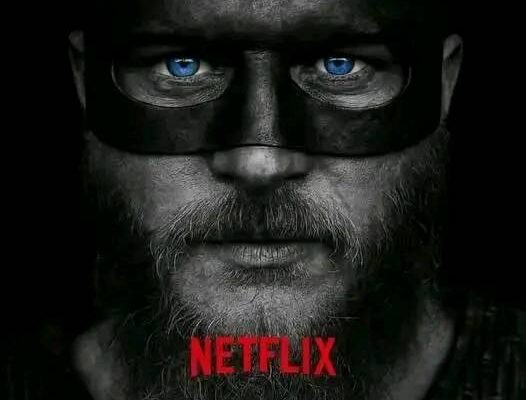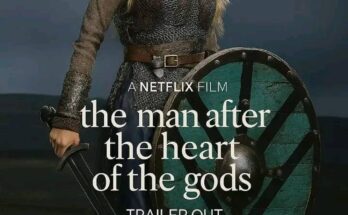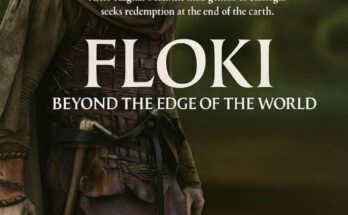Netflix Unveils Odin’s Wrath: A Gripping Viking Epic of Power, Bloodshed, and Fate
Netflix has once again demonstrated its ability to capture the imagination of global audiences with its latest release, Odin’s Wrath, a sweeping Viking saga that dives deep into the myths, legends, and brutal realities of a world shaped by ambition, violence, and destiny. This ambitious project has already started making waves not just because of its stunning visuals or grand production scale, but also due to the way it tackles themes of loyalty, betrayal, divine influence, and the unrelenting human drive for power. The show transports viewers back to the Norse world, immersing them in a cinematic retelling of history and myth that feels both authentically grounded and majestically larger than life. For Netflix, Odin’s Wrath is more than just another historical drama; it’s a narrative crafted to echo through time, appealing to lovers of mythology, fans of epic storytelling, and audiences hungry for tales where fate collides with human will.
The heart of the series lies in its ability to blur the line between myth and reality. Set during the height of the Viking Age, Odin’s Wrath unfolds in a time when men carved kingdoms out of ice and fire, and when the gods themselves were believed to walk among mortals, shaping their decisions and guiding—or cursing—their paths. The show’s narrative follows a cast of characters who embody the raw essence of Viking life: warriors seeking glory, rulers striving for dominance, families torn between honor and survival, and seers who interpret the ominous whispers of fate. With Odin, the Allfather, looming as a constant presence, the series brings forward questions about destiny and free will. Do the characters fight for themselves, or are they merely pawns in a greater, divine game of power? This tension between human ambition and godly interference fuels much of the drama, creating a layered story that resonates far beyond the battlefield.
Visually, Odin’s Wrath is a triumph. Netflix has spared no expense in recreating the harsh yet breathtaking world of the Vikings. Sweeping shots of icy fjords, raging seas, misty forests, and torchlit halls capture the scale and atmosphere of the era, while battle sequences deliver the kind of visceral, blood-soaked intensity that defines the Viking reputation. Every clash of steel, every roar of warriors charging into combat, and every desperate struggle for survival is depicted with a realism that makes the audience feel as though they are standing right in the shield wall. Yet the series also knows when to slow down, to linger on intimate moments of reflection, grief, or devotion, balancing the ferocity of war with the quiet weight of destiny pressing upon its characters.
The performances are another driving force behind the show’s impact. Each actor embodies their role with a sense of conviction that makes the mythology feel alive. The warriors are not just fighters but complex individuals driven by love, fear, vengeance, and faith. Leaders are portrayed not as caricatures of ruthless kings but as flawed humans navigating impossible choices. The series also elevates the role of women in Viking society, portraying them not only as companions or caretakers but also as leaders, strategists, and warriors in their own right. In doing so, Odin’s Wrath avoids the trap of reducing characters to archetypes, instead giving them depth and agency that ensures viewers connect with their struggles on a personal level.
Thematically, the saga resonates with timeless questions of mortality and purpose. The Vikings lived by the belief that death was not an end but a passage to Valhalla, and this worldview permeates every decision and conflict in the series. Characters confront their mortality with both fear and courage, knowing that every action could immortalize them in song or condemn them to obscurity. The presence of Odin, depicted not as a benevolent god but as a calculating overseer of fate, intensifies this struggle. His wrath is not always direct but often manifests through omens, betrayals, and the unrelenting march of destiny. This interplay between divine will and human defiance gives the series a philosophical weight, encouraging viewers to reflect on the larger forces—whether divine, societal, or personal—that shape their own lives.
One of the strengths of Odin’s Wrath is its careful blending of historical authenticity with mythical grandeur. The production team worked meticulously to capture details of Viking life, from clothing and weaponry to rituals and governance, while also weaving in the larger-than-life elements of Norse mythology. This balance allows the show to appeal to history enthusiasts who crave accuracy as well as to fans of fantasy who seek awe and spectacle. The gods are not omnipresent in every scene, yet their shadow looms large, creating an atmosphere where myth and reality coexist seamlessly. This makes the world of the series both believable and transcendent, grounding its epic stakes in a world that feels lived-in and tangible.
Beyond the storytelling itself, Odin’s Wrath arrives at a cultural moment where Viking sagas are enjoying renewed popularity. From television dramas and video games to literature and cinema, Norse mythology has become a fertile ground for storytelling in recent years. What sets Odin’s Wrath apart, however, is its ambition to merge spectacle with depth. Rather than focusing solely on battles or mythology, the series delves into the psychological and emotional toll of leadership, the cost of ambition, and the eternal struggle between family loyalty and personal glory. It asks not only what it means to be a warrior but also what it means to live under the constant gaze of gods who demand sacrifice.
The pacing of the narrative ensures that viewers remain invested from start to finish. Early episodes establish the characters and world, gradually pulling audiences into the larger conflicts at play. As the series progresses, alliances shift, betrayals strike with devastating force, and battles escalate in both scale and consequence. By the climax, the story erupts into a crescendo of power struggles, divine interventions, and human tragedies that leave audiences breathless. Yet even in its most explosive moments, Odin’s Wrath remains a story about people—flawed, ambitious, and vulnerable individuals trying to carve their destiny in a world ruled by gods and bloodshed.
What also makes Odin’s Wrath compelling is its ability to speak to modern audiences despite its ancient setting. Themes of leadership, sacrifice, faith, and survival are universal, transcending time and culture. In a world still grappling with questions of authority, destiny, and conflict, the struggles of these Viking characters feel strikingly relevant. The show reminds viewers that while the weapons, landscapes, and belief systems may have changed, the human heart remains driven by the same desires and fears that shaped civilizations centuries ago.
In essence, Netflix has crafted more than just another historical epic. Odin’s Wrath is a meditation on power, destiny, and the human condition, wrapped in a tale of warriors, gods, and bloodshed. Its gripping narrative, breathtaking visuals, and powerhouse performances combine to create an experience that is both exhilarating and thought-provoking. It captures the brutality of Viking life while honoring the mythology that has fascinated generations, delivering a story that lingers long after the credits roll. For audiences craving a saga that fuses authenticity with grandeur, brutality with beauty, and mythology with humanity, Odin’s Wrath stands as a bold testament to the timeless allure of Viking storytelling.



